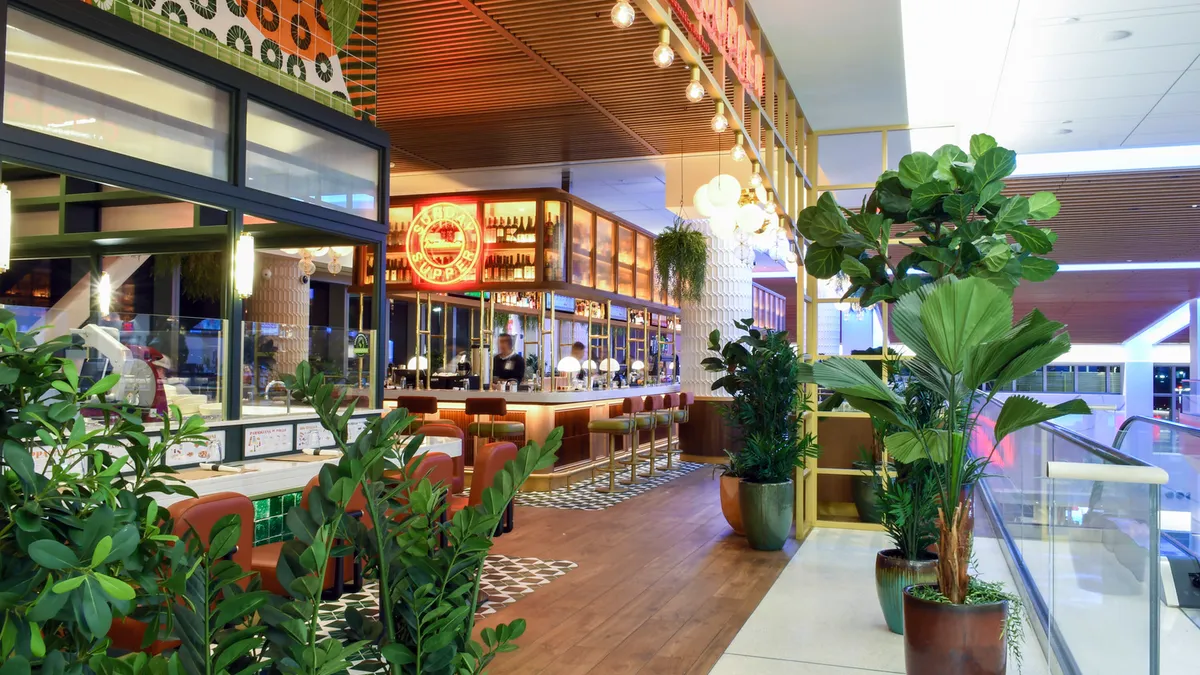For years the standard recommendation for major airlines has been clear – arrive at the airport at least two hours before a flight’s departure to ensure enough time to get through check-in and security. This often leaves passengers with more time to kill at the airport than they would prefer.
Because travelers arrive so early before their flights, they are a captive audience to a terminal’s amenities. As a result, airports have entered a competition to enhance the passenger experience.
To overcome the long-standing reputation of airports being a place a traveler must simply endure to get to their destination, a trend of transforming airports into attractive destinations in their own regard has emerged.
An exciting trend helping in this effort is the integration of well-known restaurants from the airport's home city into the terminal itself. This creates an experience that mirrors what is found on the city streets, bringing a touch of local flavor and culture to the airport.
One of the most notable examples of this is New York City’s LaGuardia Airport. After years of enduring a reputation for its outdated, cramped and dingy concourses, an aggressive plan to remake it into a modern and welcoming space began in 2016. In 2021, Delta Airlines began its renovations, starting with the transformation of Terminal C. The renovation of Terminal D is currently ongoing.
Delta has transformed its LaGuardia terminals into high-end, inviting destinations with comfortable seating, world-class amenities and high-quality restaurants from popular New York establishments.
Building a Destination
With airports across the country looking to do similar transformations, it becomes essential that the construction teams responsible for these projects have the requisite experience in executing high-end installations.
The ability to adhere to demanding schedules and strong partnerships with top-tier subcontractors has made teams like this uniquely qualified to manage these projects. An extensive background in executing high-end installations for corporate interior clients brings a unique perspective to the transformation of the country’s airport terminals into upscale hospitality spaces.
No Time to Waste
The emphasis on timelines is crucial. When an airline determines an opening date, there is minimal flexibility to negotiate it.
When a terminal is opening, all amenities must be ready for business. Like any other restaurant, opening on time is crucial for profitability, so delaying it is not an option.
A crucial factor in ensuring airport restaurants and other amenities are completed in time for a terminal opening is heavily reliant on a strong partnership between the general contractor and top-tier subcontractors. Their experience in handling high-end tenant improvement projects has accustomed them to the demanding timelines in building out the amenities in an airport terminal.
In addition, these subcontractors bring extensive experience working with premium material finishes including millwork, metal, glass, tile and custom signage. This expertise is instrumental in ensuring the quality, durability and aesthetics necessary to transform terminal restaurants.
A general contractor that can leverage these relationships, brings a unique perspective to these projects and introduces an innovative approach to airport buildouts.
Elevating Aesthetics and Durability
Because airlines want to improve the experience of waiting in an airport terminal, the overall aesthetic of the space has also improved. Terminals are gravitating away from simple white drywall towards more elevated materials. For example, LaGuardia’s Terminal C now boasts high ceilings, custom architectural metals, millwork, marble accents, Spanish stonework and ceramic tile.
Durable, high-end materials not only raise visual appeal but are also an essential protection against the typical wear and tear experience at the hands of hurried travelers.
Navigating Flexibility
A project team building an airport amenity space must also be able to work around an airport’s many restrictions, which affect a project’s schedule and budget.
For example, an airline lounge now under construction at Los Angeles International Airport (LAX) shares a wall with the area where airline pilots sleep in between flights. As a result, the project team must work around restrictions that are more stringent than most tenant interior work.
It’s not uncommon that a team will have to frequently move around and will only be able to work in an area for two hours before they must leave and return later for another two hours of work. Restrictions such as this also impact when subcontractors can move materials to a jobsite location, requiring a great deal of coordination. Daytime and nighttime work is also often required.
Collaboration and the ability to pivot when necessary is essential. It's crucial to adapt, coordinate and work together when challenges arise.
Flying Into the Future
The evolution towards re-imagining airport terminals as high-end restaurant and hospitality spaces not only makes them more attractive destinations but enriches the overall passenger experience. As more airports across the US embark on similar transformations, the experience and innovative approach of the construction team play a key role in reshaping the future of airport travel.










